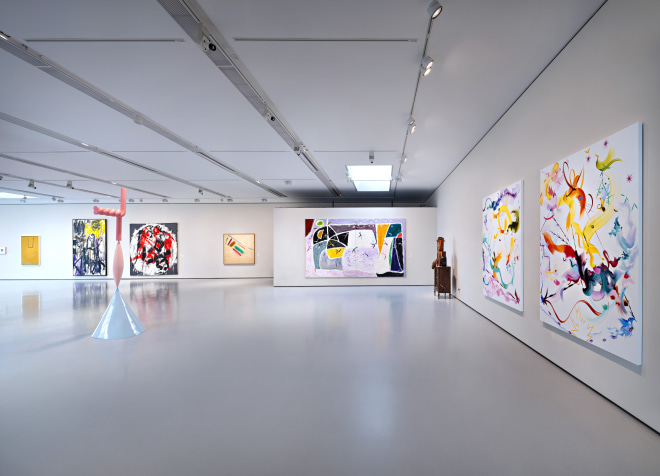In China, it is amid urbanization that contemporary art registers development. Guangdong, as the frontier of reform and opening up, as well as the frontier of artistic innovation and development, has provided a stage for contemporary art creation with its open posture and vitality. Examining the Pearl River Delta in the context of globalization, or focusing on global contemporary art and cultural phenomena from the perspective of the Pearl River Delta, has become a unique phenomenon of cultural research.
By including the domestic urban clusters with Beijing and Shanghai as the core in the frame of comparison and expanding the frame to cover Asia and the Western art arena with Eastern elements, this exhibition hopes to examine the relationship of mutual re-flection, delve into this geographical power structure, and probe the diversity of cultural networks in the south and their cross-boundary communication and connection. In fact, the view of the interweaving of multiple centers increasingly represents the key trend. The many centers, like stars, form chains, which then form webs, thus eliminating rigidborders. The "south", though based on geographical cognition, transcends this regional construction, and becomes more of a creative perspective. Especially, we try to study, review and present the artistic practice conducted in the deeply-connected historical, ideological and cultural relations that are unfolded from this perspective.
Gillian Ayres, John McLean and Tong Kunniao from PIFO Gallery are participating in the exhibition "A Constellation of Cities: Contemporary Art and Experiment in Southern China and Beyond" at Guangdong Museum of Art (BAIETAN). Their works are exhibited in the "Container" of Modernity, and "Journeys to the East: Revelations and Reverberations".
Gillian Ayres (1930-2018)
Ayres’s artistic practice was influenced by western art masters such as Tiziano Vecelli, J. M. W. Turner , Oscar-Claude Monet, Paul Cézanne, Vincent Willem van Gogh. At the same time, having an open-minded attitude of getting inspired from diverse cultures and traditions all around the world, the artist favored oriental art, especially traditional Chinese paintings and Japanese ukiyo-e.
John McLean (1939-2019)
John's (and my) generation inherited from the preceding one in Britain the transformative, liberating experience of Abstract Expressionism and subsequent American painting. John found particular affinity with the so-called “color field” painting that emerged in America and then Canada in the 1960s, and his work does present itself as a uniquely personal development of this tradition-personal in its color and configuration, and perhaps more importantly, but elusively, in its spatiality. Unlocatable forms like enlarged brushstrokes appear to float and then settle, and then float again, in a sort of shimmering ether.
John Elderfield
Tong Kunniao
Once appeared—or more specifically, elaborated— in the paintings that can be described as playful or cynical, the anti-grand-narratives attitude —after shrugging off the binary understanding of political correctness with Chinese characteristics, has re-emerged in a sincere, progressive manner other than in the form of a new “gaudy aesthetics” that is rather speculative. This time, however, such an attitude points to the dual realm of the material world and the wellbeing of individuals, which is constantly involuted. Here we come to see that Tong Kunniao’s artistic practice, in terms of subject matter, has conceptualized the broad equality of human, nature, and machine; in terms of form, the artist has developed a deontological, even de-mechanical type of artistic practice. Such a disruptive strategy appears to remind us of Futurism and Dadaism which were popular one hundred years ago or so, making us wonder if a new nihilistic avant-garde movement can ever happen again.






